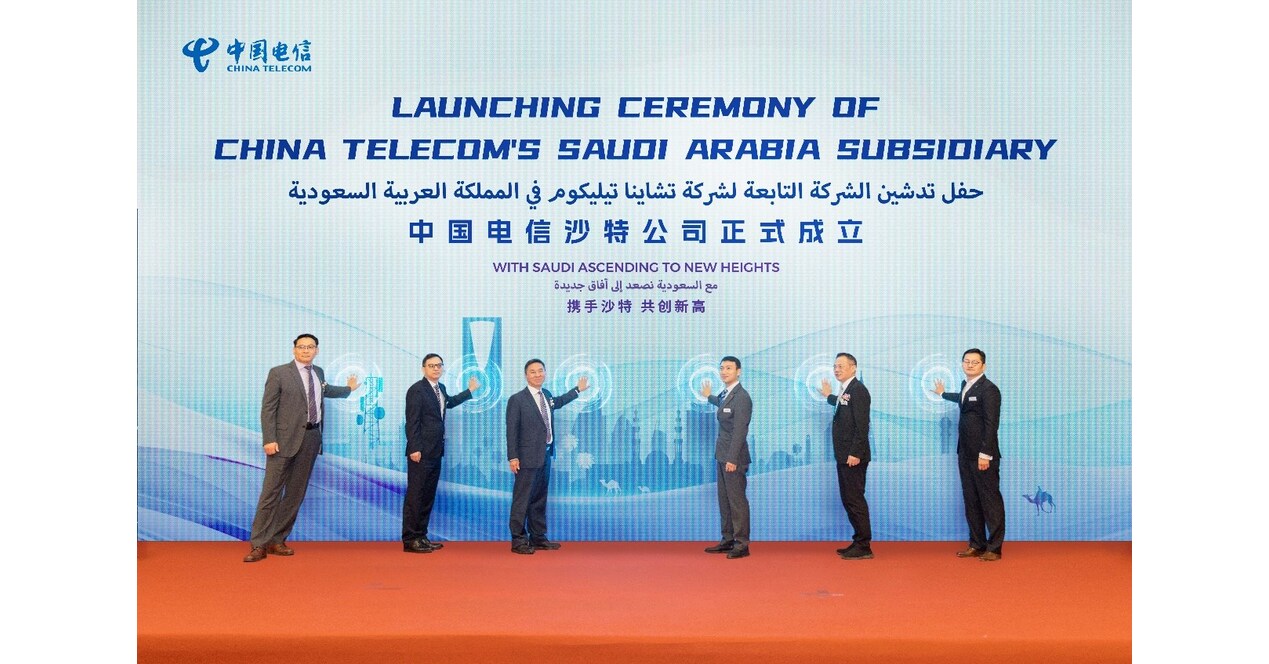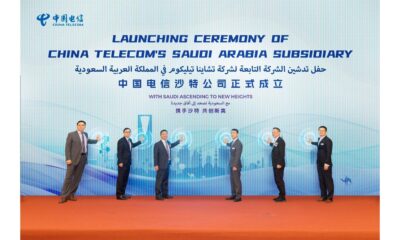China
Tech crackdowns rid China of entrepreneurial capitalism

Abstract
Chinese authorities have recently shifted their approach towards China’s top platform tech companies. The crackdown that began in November 2020 with Ant Group’s cancelled IPO has now transitioned into extending an olive branch. By June 2023, China’s economy was struggling and youth unemployment had risen above 21 percent.
Author: Martin Miszerak, Renmin University
Since early 2023, Chinese authorities have started extending an olive branch to China’s top platform tech companies after over two years of ‘regulatory crackdown’. The crackdown started in November 2020 with the cancellation of the initial public offering (IPO) of e-commerce giant Ant Group — an affiliate of Alibaba.
Besides Ant Group, the ‘rectification’ affected most of China’s large platform companies. Yet by June 2023, a cold was blowing over China’s economy. The post-COVID-19 recovery was faltering. Youth unemployment rose above 21 per cent.
The authorities also likely concluded that they had accomplished most of the objectives of the rectification. At the China Development Forum in March 2023, Premier Li Qiang bent over backwards to assure prominent Western CEOs that China was welcoming the private sector, both foreign and domestic.
There is no consensus among academic and journalistic commentators about the crackdown’s ‘true’ objectives. One view holds that it was a personality clash between the ‘exuberance’ of Jack Ma — Alibaba’s founder and China’s most prominent private entrepreneur — and the fundamentally Maoist orientation of President Xi Jinping.
But a focus on Jack Ma ignores the fact that essentially all platform companies underwent some form of rectification. Another view holds that it was simply a scheme to clip the wings of China’s top private companies, given Xi Jinping’s embrace of the state-owned sector. Yet data showing an increasing penetration of China’s economy by large private companies belied Xi Jinping’s alleged hostility to the private sector.
Others maintain that a ‘great’ rectification was needed to align the mission of platform tech companies with Xi Jinping’s social policy objectives such as ‘common prosperity’ and the drive against ‘disorderly expansion of capital’. But the true objective of the crackdown had little to do with regulation, as authorities’ actions went beyond what might be considered an imposition of a stricter regulation.
Regulatory rectification was only a vehicle to accomplish other objectives. The crackdown was characterised by a spate of shareholder wealth destruction. Ant Group was headed for its IPO in November 2020 at an implied valuation of US$313 billion. Yet in July 2023, Ant Group launched a share buyback at a valuation that was 70 per cent lower. The global ride-sharing leader, Didi Chuxing, conducted its New York IPO in June 2021 at a valuation of US$70 billion. After a forced delisting from the New York Stock Exchange, it is currently trading over the counter with a market capitalisation of about US$16.7 billion.
The other side of the coin was the wealth extraction from platform companies to various state-owned entities. One instrument of extraction was in the form of unprecedented fines. Alibaba was fined US$2.8 billion in April 2021 for alleged abuse of market dominance.
Another method of extraction was through ‘voluntary’ contributions to causes championed by Xi Jinping. Tencent — the global game leader and investor in many start-ups — ‘earmarked’ US$7.7 billion in 2021 to a fund dedicated to ‘common prosperity’.
Another extraction mechanism was carried out through putting a brake on platform companies’ ability to grow. Didi was barred from…
China
Strengthening Economic Relations and Opportunities Between China and Malaysia

Malaysia, strategically located in Southeast Asia, is a vital gateway to ASEAN markets. In 2023, China remained Malaysia’s largest trading partner, with bilateral trade at US$190.24 billion, despite a slight decline. China is also the top source of tourists for Malaysia.
Malaysia is strategically located at the heart of Southeast Asia and serves as a gateway to ASEAN’s 650 million people and a combined GDP of US$3.2 trillion. Its geographical advantage positions it as a hub for accessing ASEAN markets and connecting to the Middle East, Australia, and New Zealand.
In 2023, bilateral trade between China and Malaysia amounted to US$190.24 billion. Of this, China’s exports to Malaysia totaled US$87.38 billion, while imports from Malaysia reached US$102.86 billion. China has remained Malaysia’s largest trading partner for 15 consecutive years. Major imports from Malaysia include integrated circuits, computers and their components, palm oil, and plastic products. Key Chinese exports to Malaysia consist of computers and their components, integrated circuits, apparel, and textiles.
China has implemented a unilateral 15-day visa exemption policy for ordinary Malaysian passport holders, while Malaysia offers 30-day visa-free entry for Chinese citizens. According to Malaysian statistics, over 1.47 million Chinese tourists visited Malaysia in 2023, maintaining China’s position for the seventh consecutive year as Malaysia’s largest source of tourists outside ASEAN.
Malaysia was China’s 10th largest global trading partner and the second largest within ASEAN. However, due to factors such as the decline in international commodity prices (including palm oil and natural gas), uncertainties arising from geopolitical conflicts, and a high base from the previous year, China-Malaysia bilateral trade experienced a slight decline in 2023, decreasing by 5.2 percent year on year.
Despite these fluctuations, China remains Malaysia’s primary source of imports and second-largest export destination, underscoring the deep economic ties between the two nations and Malaysia’s pivotal role as China’s second-largest ASEAN trading partner.
China-Malaysia Trade Value, 2019-2023
| This article was first published by China Briefing , which is produced by Dezan Shira & Associates. The firm assists foreign investors throughout Asia from offices across the world, including in in China, Hong Kong, Vietnam, Singapore, and India . Readers may write to info@dezshira.com for more support. |
Read the rest of the original article.
China
Three lessons the west can learn from China’s economic approach to AI

AI is transforming various sectors globally, but adoption differs. China prioritizes speed and practicality, embracing imperfections. The West, seeking perfection, can learn from China’s pragmatic approach to AI integration.
AI is already everywhere, ready to change the way we work and play, how we learn and how we are looked after. From hospitality to healthcare, entertainment to education, AI is transforming the world as we know it.
But it’s developing at a different pace in different parts of the world. In the west, it seems, there is a tendency to aim for perfection, with companies taking their time to refine AI systems before they are implemented.
China, on the other hand, has taken a more pragmatic path, on which speed and adaptability are prioritised over flawless execution. Chinese companies appear more willing to take risks, accept AI’s current limitations and see what happens.
And China’s desire to be the world leader in AI development seems to be working. Here are three important lessons the west can learn from China’s economic strategy towards AI.
1. Embrace imperfection
Many Chinese companies have adopted a “good enough” mentality towards AI, using it even when the technology is not fully developed. This brings risks, but also encourages fast learning.
For example, in 2016, Haidilao, a popular Chinese restaurant chain, introduced “Xiaomei”, an AI system which dealt with customers calling up to make reservations. While Xiaomei is not the most sophisticated AI system (it only understands questions about reservations), it was effective, managing over 50,000 customer interactions a day with a 90% accuracy rate.
It’s not perfect, but it provides a valuable service to the business, proving that AI doesn’t need to be flawless to make a big impact.
2. Make it practical
A key distinction between AI strategies in China and the west is the focus on practical, problem-solving applications. In many western industries, AI is often associated with cutting-edge technology like robot-assisted surgery, or complex predictive algorithms.
While these advances are exciting, they do not always bring immediate impact. China, by contrast, has made significant strides by applying AI to solve more basic needs.
In China, some hospitals use AI to help with routine – but very important – tasks. For instance, in April 2024, Wuhan Union Hospital introduced an AI patient service which acts as a kind of triage nurse for patients using a messaging app.
Patients are asked about their symptoms and medical history. The AI then evaluates the severity of their needs, and prioritises appointments based on urgency and the medical resources available at that time. The results are then relayed to a human doctor who makes the final decision about what happens next.
By helping to ensure that those with the most critical needs are seen first, the system plays a crucial role in improving efficiency and reducing waiting times for patients seeking medical attention. It’s not the most complex technology, but in its first month of use in the hospital’s breast clinic, it reportedly provided over 300 patients with extra consultation time – 70% of whom were patients in urgent need of surgery.
3. Learn from mistakes
China’s rapid adoption of AI hasn’t come without challenges. But failures serve as critical learning experiences.
One cautionary tale over AI implementation comes not from China, but from Japan. When Henn na Hotel in Nagasaki became the world’s first hotel staffed by robots, it received a great deal of attention for its futuristic concept.
But the reality soon fell short of expectations. Churi, the hotel’s in-room assistant robot, frequently misunderstood guest requests, leading to confusion. One guest was reportedly woken up repeatedly because a robot in his room mistakenly understood the sound of his snoring to be a question.
In contrast, many Chinese hotels have taken a more measured approach, opting for simpler yet highly effective robotic solutions. Delivery robots are now commonplace in hotel chains across the country, and while not overly complex, they are adept at navigating hallways and lifts autonomously, bringing meals to guests.
By focusing on specific, high-impact problems, Chinese companies have successfully integrated AI in ways that minimise disruption and maximise usefulness.
The Chinese restaurant chain I mentioned earlier provides another good illustration of this approach. After the success of its chatbot, Haidilao introduced “smart restaurants” equipped with robotic arms and automated food delivery systems. While innovative, the technology struggled during peak hours and lacked the personal touch many customers valued.
Instead of abandoning the project, Haidilao continued to adjust and refine its use of AI. Rather than adopting a fully automated restaurant model, it went for a hybrid approach, combining automation with human staff to enhance the dining experience.
This flexibility in the face of setbacks represents a crucial willingness to pivot and adapt when things don’t go as planned. Overall, China’s pragmatic approach to AI has enabled it to take the lead in many areas, even as the country lags behind the west in terms of technological sophistication. This is driven by a willingness to embrace AI’s imperfections, and then adapt where necessary.
Where speed and adaptability are critical, companies can’t afford to wait for perfect solutions. By embracing AI’s imperfections, focusing on practical applications and real-world feedback, Chinese companies have unlocked the economic value of AI in a way that others are being too timid to emulate.
This article is republished from The Conversation under a Creative Commons license. Read the original article.
Business
China Telecom Gulf Officially Launches Operations in Saudi Arabia for Business Expansion

China Telecom Gulf was launched in Riyadh, enhancing digital cooperation between China and Saudi Arabia under the “Belt and Road Initiative,” with a focus on technological innovation and infrastructure development.
China Telecom Gulf Launches in Riyadh
On November 21, 2024, China Telecom Gulf was officially inaugurated in Riyadh, symbolizing a significant advancement in China Telecom’s internationalization efforts and commitment to the "Belt and Road Initiative." The event was attended by over 100 dignitaries, including Mr. Liu Guiqing, Executive Director of China Telecom Corporation, and Mr. Fawaz from the Industrial and Commercial Bank of China Riyadh Branch, marking a milestone in fostering a shared future between China and Arab nations.
Commitment to Digital Transformation
In his speech, Mr. Liu highlighted China Telecom’s dedication to collaborating with Saudi enterprises and local governments to enhance digital infrastructure. By leveraging its expertise in technologies like 5G and artificial intelligence, the company aims to provide high-quality communication services, thereby driving socio-economic growth in the region.
Strategic Partnerships for Growth
During the launch, China Telecom Gulf signed strategic agreements with several prominent companies, including Saudi Telecom Company and Huawei. These collaborations are geared towards optimizing digital experiences for Saudi customers and contributing to the broader Sino-Saudi cooperation in technology and economic development, solidifying China Telecom’s role in the Middle Eastern telecom landscape.
Source : China Telecom Gulf Officially Launches in Saudi Arabia for Business






